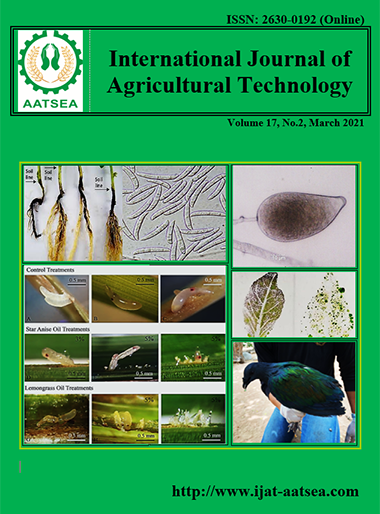Building indigenous smart hydroponic farm as lessons from an academic experiment--A review article
Main Article Content
Abstract
Growing population is creating seriously concerns regarding availability of adequate food supplies. There is continuous pressure on agricultural technology stake holders to come up with cheaper and more efficient techniques that can be applied at scale. Hydroponics is one of the advanced plants growing techniques. This is an alternate agricultural technique based on soil-less methods with the promise of solving food shortage problem. There is needed to create expertise in modern farming methods. Hydroponic technology is gaining traction in Pakistan. Several farms have been developed in different areas of Pakistan. However, such systems suffer from different problems. The primary problem with contemporary efforts to build such farms is used the imported materials. This makes the cost prohibitively high. These farms are devoided any modern control and communicated the mechanism thus completely relied on manual methods. This paper describes our efforts to design and develop a smart Hydroponic system using only locally available materials, and also explains the lessons learned to provide a new guideines for farmers/researchers interested in this domain
Article Details

This work is licensed under a Creative Commons Attribution-NonCommercial-NoDerivatives 4.0 International License.
References
Aravind, R. and Sasipriya, S. (2018). A survey on Hydroponic methods of smart farming and its effectiveness in reducing pesticide usage. International Journal of Pure and Applied Mathematics, 119:1503-1509.
Bugbee, B. (2004). Nutrient management in recirculating hydroponic culture. In: The proceedings of the south pacific soilless culture conference. Nichols, M. (ed.). Acta Hort, 648:99-112.
Buwalda, F., Baas, R. and Van Weel, P. A. (1993). A soilless ebb-and-flow system for all-year-round chrysanthemums. In International Symposium on New Cultivation Systems in Greenhouse, 361:123-132.
DHT22 Datasheet (2020). Retrieved from https://datasheet4u.com/datasheet-pdf/Aosong/DHT22/pdf.php?id=792211.
Diver, S. and Rinehart, L. (2000). Aquaponics-Integration of hydroponics with aquaculture. Attra.
Gole, K., Nalange, T. and Gaikwad, P. (2020). Consumers Perception towards Hydroponically Grown Residue-Free Vegetables. Our Heritage, 68:8215-8229.
Graves, C. J. (1983). The nutrient film technique. Horticultural Reviews, 5:1-44.
Hidayanti, F., Rahmah, F. and Sahro, A. (2020) Mockup as internet of things application for hydroponics plant monitoring system. International Journal of Advanced Science and Technology, 29:5157-5164.
Ibayashi, H., Kaneda, Y., Imahara, J., Oishi, N., Kuroda, M. and Mineno, H. (2016). A reliable wireless control system for tomato hydroponics. Sensors, 16:644-658.
Jensen, H. M. (2013). Hydroponics Worldwide–A Technical Overview. Univ. Arizona. School of Agriculture. Tucson, Arizona.
Martin, M. and Molin, E. (2019) Environmental assessment of an urban vertical hydroponic farming system in Sweden. Sustainability, 11:4124-4137.
McDonald, B. (2016). Hydroponics: creating food for today and for tomorrow (Doctoral dissertation).
NodeMCU (2020). Retrieved from https://www.nodemcu.com
Olubanjo, O. O. and Alade, A. E. (2020). Development of a low cost greenhouse and drip hydroponic structure for vegetable production in South-West Nigeria, FUTA journal of engineering and technology, 14:28-37.
Orsini, F., Morbello, M., Fecondini, M. and Gianquinto, G. (2010). Hydroponic gardens: undertaking malnutrition and poverty through vegetable production in the suburbs of Lima, Peru. Acta horticulturae, 881:173-177.
RaspberryPi. (2020). Retrieved from https://www.raspberrypi.org/
Sharma, N., Acharya, S., Kumar, K., Singh, N. and Chaurasia, O. P. (2018). Hydroponics as an advanced technique for vegetable production: An overview. Journal of Soil and Water Conservation, 17:364-371.
Springer, C. (2013). Hydroponics and the Need for Continuous Nutrient Monitoring. (Master Thesis). California State University, San Marcos.
Vásquez, E. F. and Vásquez, D. A. (2017). A preliminary study for cucurbita moschata Duchesne (Loche) crop production under the hydroponic dutch bucket system. Agritechnology, 6:1- 4.


